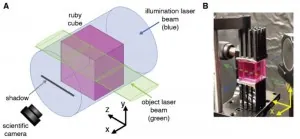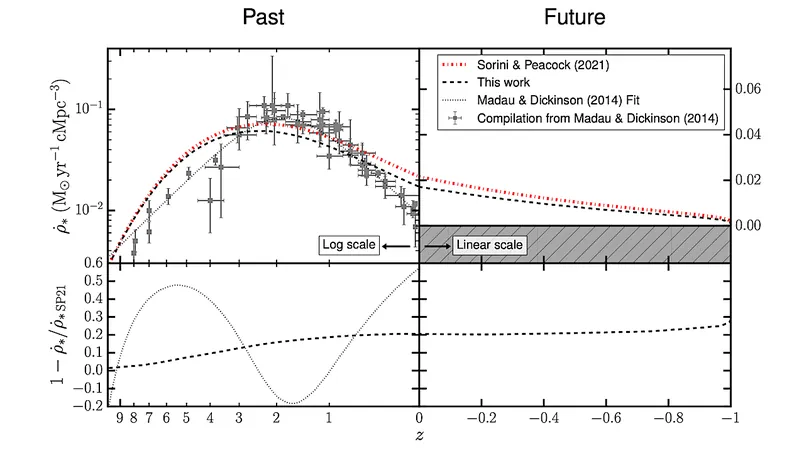
Beware of New Cyber Threats: Phishers are Raising Their Game!
2024-11-19
Author: Emma
As of November 19, 2024, recent updates have revealed alarming new tactics employed by cybercriminals in their phishing attacks. With every advancement in security measures, hackers have also adapted their strategies, leading to more sophisticated methods that can catch even the most vigilant users off guard.
Why You Need to Be Cautious with Visio Files
Microsoft Visio files, commonly used in corporate settings to display complex data, are now being weaponized by hackers. These .vsdx files are used to deliver malicious URLs, creating a false sense of familiarity that lures unsuspecting employees into clicking on traps set by cybercriminals. The analysis from Perception Point indicates that there has been a "dramatic increase" in such phishing attacks, targeting organizations worldwide with a new layer of deception that preys on user trust.
The typical attack scenario starts with an email, seemingly coming from a legitimate source due to the use of compromised email accounts. These deceptive emails often include business-related proposals or purchase requests, urging recipients to take immediate action. Clicking on the URL leads victims to a compromised Microsoft SharePoint page that hosts the dangerous Visio file, further concealing the real intent of the cyber attack.
The "Ctrl Key Trick" in Two-Step Phishing Attacks
One particularly insidious tactic in these 2SP attacks instructs victims to hold down the Ctrl key while clicking a link. This clever ploy is designed to evade automated detection systems and security scanners. By requiring human interaction, attackers can slip past measures that expect more traditional phishing behaviors.
Once the victim unwittingly follows this instruction, they are redirected to a fake Microsoft 365 login page, crafted to steal user credentials. Implementing robust two-factor authentication can serve as a critical line of defense against these types of attacks.
SVG Images: The New Method of Deception
In addition to the use of Visio files, there is an increase in the deployment of scalable vector graphics (SVG) in phishing attacks. As explained by Lawrence Abrams from Bleeping Computer, these graphics can display malicious forms or deploy malware while avoiding detection. The dual nature of SVG files allows them to execute JavaScript and load content that can create fake login forms, further complicating the defenses against such attacks.
Stay Alert During International Fraud Week
As the world observes International Fraud Week from November 17 to 23, it is an opportune moment to raise awareness about the escalating cyber threats and the techniques employed by fraudsters. Experts like Muhammad Yahya Patel, lead security engineer at Check Point Software, remind us that the landscape of fraud is evolving alongside technological advancements, making it critical to stay informed and vigilant.
Patel identifies various categories of cyber fraud that organizations should be wary of, including:
1. Cyber Fraud: Utilizing phishing, malware, and ransomware to disrupt operations and access sensitive data.
2. Internal Fraud: Employees committing fraud through actions like document forgery or embezzlement.
3. Invoice Fraud: Scammers sending fraudulent invoices to businesses.
4. CEO Fraud: Impersonators posing as executives to secure sensitive information or fund transfers.
5. Return Fraud: Misuse of return policies in retail for financial gain.
6. Payroll Fraud: Employee manipulation of payroll systems for personal benefit.
Adapting to the Changing Landscape of Cyber Threats
The shift from broad, indiscriminate attacks to highly targeted schemes indicates how ransomware and cyber fraud have evolved. Attackers now engage in thorough reconnaissance to exploit vulnerabilities effectively, making them much more dangerous. The sophistication of these threats necessitates a robust and dynamic approach to security.
As organizations grapple with the growing impact of AI on fraud schemes, adopting advanced AI-driven security solutions is essential to stay one step ahead of cybercriminals. Building resilient defenses not only wards off fraud but also fosters a secure environment for all.
Stay vigilant, stay informed – and whatever you do, don't hold down that Ctrl key!









 Brasil (PT)
Brasil (PT)
 Canada (EN)
Canada (EN)
 Chile (ES)
Chile (ES)
 España (ES)
España (ES)
 France (FR)
France (FR)
 Hong Kong (EN)
Hong Kong (EN)
 Italia (IT)
Italia (IT)
 日本 (JA)
日本 (JA)
 Magyarország (HU)
Magyarország (HU)
 Norge (NO)
Norge (NO)
 Polska (PL)
Polska (PL)
 Schweiz (DE)
Schweiz (DE)
 Singapore (EN)
Singapore (EN)
 Sverige (SV)
Sverige (SV)
 Suomi (FI)
Suomi (FI)
 Türkiye (TR)
Türkiye (TR)